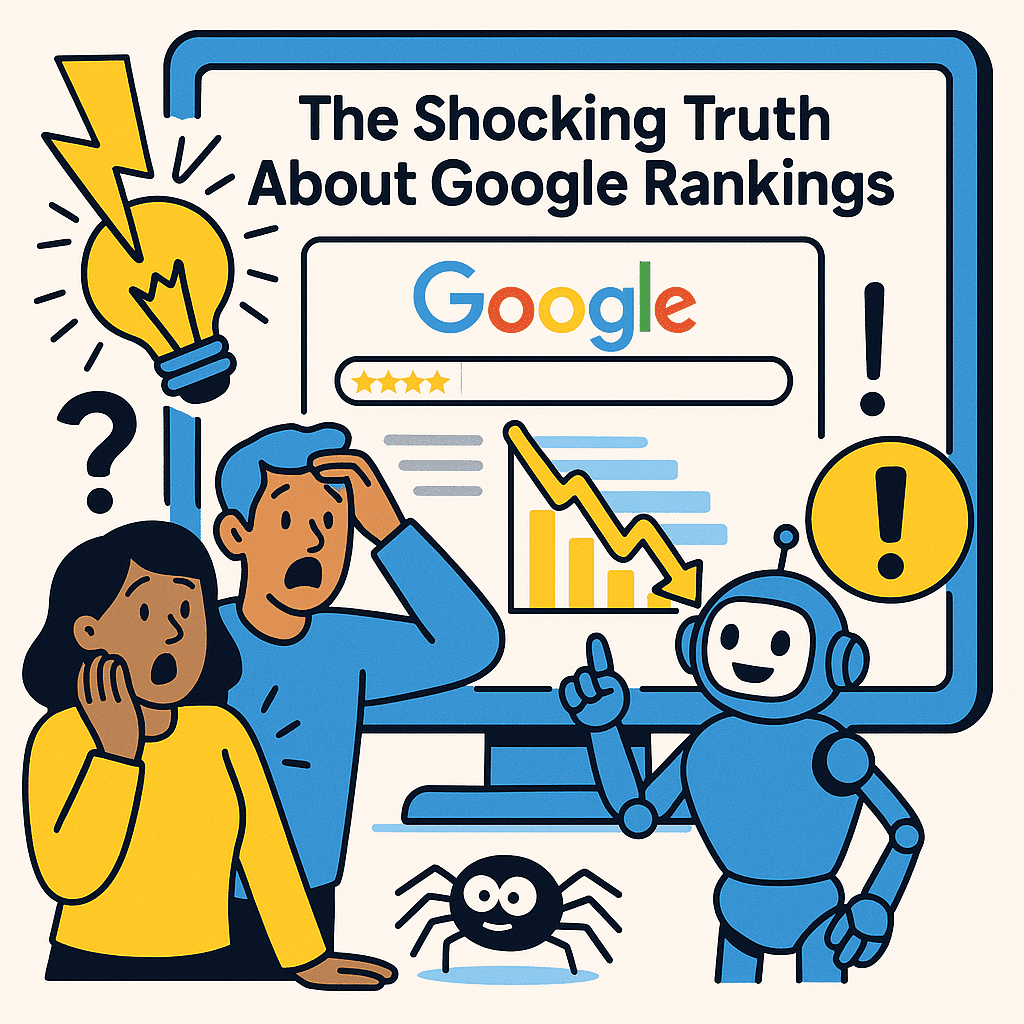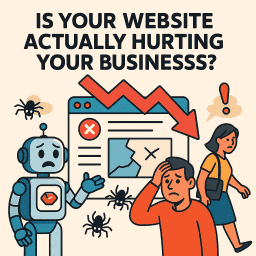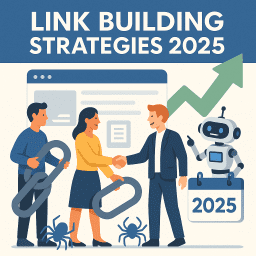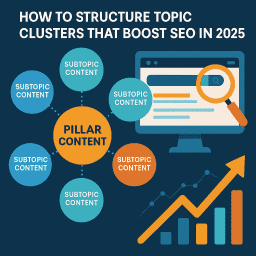The Shocking Truth About How Google Ranks Websites
You Can’t Fool Google—But People Try
🔑 Google Rankings Uncovered: What Works Now
You’ve followed the advice, installed the plugins, and written blog post after blog post—but your site still isn’t ranking. What’s really going on? It’s time to pull back the curtain on how Google rankings actually work in 2025.
🚫 The Lie: “Just Publish Great Content”
One of the most common pieces of SEO advice is to “just create great content.” And while yes—quality content is important—it’s nowhere near the whole story.
Thousands of websites with amazing, well-written articles never reach page one. Why? Because Google doesn’t just rank “great content”—it ranks what it can understand, trust, and promote based on hundreds of behind-the-scenes signals.
🔍 The Truth: Google Doesn’t ‘Read’ Your Site Like a Human
Google isn’t a person—it’s a machine. It doesn’t sit back with a cup of tea and read your website. It analyses code, structure, links, speed, and dozens of technical markers. If your site isn’t technically sound, Google will struggle to crawl and rank it—no matter how brilliant your content is.
This includes:
- 📄 Meta tags and schema markup
- 🧭 Internal linking structure
- 📈 Bounce rate and user interaction signals
- ⚙️ Core Web Vitals and page speed
- 🖥️ Mobile-friendliness and responsive design
👀 Google Doesn’t Show the “Best” Results – Just the Most Relevant
Here’s the part no one talks about: Google doesn’t show the best content; it shows what its algorithm thinks is the most relevant to a search query.
You can have the best article in the world about “how to fix a leaky tap,” but if you don’t structure it properly, include the right keywords, or earn any backlinks, Google may never even notice it exists.
⚖️ Domain Authority Still Matters (Even If Google Denies It)
Google has gone on record saying it doesn’t use “domain authority” as a ranking factor—but let’s be real. Sites with high trust, strong backlinks, and a history of quality content always outperform brand-new or lower-trust sites.
📦 Content Alone Won’t Rank You (But Smart Content Will)
If you’re relying purely on the “build it and they will come” approach, you’re going to wait a long time.
What works in 2025 is strategic content that:
- ✅ Targets realistic, well-researched keywords
- ✅ Matches search intent (what the user is really looking for)
- ✅ Is structured with H2s, lists, and clear formatting
- ✅ Links to (and earns links from) other trusted sources
- ✅ Loads fast and looks great on mobile
📉 Ranking Drops Happen—and Google Won’t Tell You Why
You might be ranking well one day and plummet the next. Welcome to the world of algorithm updates.
Google constantly tweaks its algorithm, often without warning. Even if your site is perfectly optimised, a core update could reshuffle the deck. And Google? They won’t tell you what changed.
This is why ongoing SEO monitoring is essential—not just a one-time setup.
🕵️ Backlinks Are Still a Big Deal (Sorry!)
No matter how many new metrics Google introduces, backlinks are still one of the most powerful ranking signals.
But not all links are created equal. One link from a trusted, niche-relevant site can be worth more than 100 spammy ones. In fact, too many bad links can hurt you more than help.
Backlink strategies that work today include:
- 📢 Guest posting on quality sites
- 📑 Creating linkable assets (e.g. tools, checklists, infographics)
- 🤝 Building relationships with other site owners in your niche
⚙️ Tools Like Yoast or Rank Math Aren’t Magic
Installing an SEO plugin is like putting training wheels on your site—it helps you get started, but it won’t take you to the top alone.
Tools like Yoast and Rank Math can flag missing titles or overused keywords, but they don’t fix deeper issues like crawl errors, indexing problems, or poor-quality backlinks.
⏳ SEO Takes Time—Even When You Do Everything Right
We live in an instant-results world, but SEO doesn’t work that way. Even if you do everything “correctly,” it can take weeks or even months to see movement—especially if you’re in a competitive niche.
This is where consistency pays off. Regular publishing, link building, updating older content, and monitoring your performance will compound over time.
💡 So… What Actually Gets You to Page One?
Based on everything we’ve seen with clients, experiments, and industry trends, the formula for rankings in 2025 looks something like this:
- 🔑 Keyword research (with realistic targets)
- 📋 Clear content structure (H1, H2s, paragraphs, bulleted lists)
- 🔗 Relevant internal and external links
- 📱 Mobile optimisation and fast load times
- 📈 Backlinks from reputable sources
- 🧠 A smart, intent-matching headline and meta description
- 🔍 Fresh content that addresses what users actually want to know
🏁 Final Thoughts: It’s Not About Gaming Google—It’s About Earning Trust
Here’s the real truth: Google doesn’t want to reward clever tricks. It wants to reward trust, consistency, and usefulness. SEO in 2025 is less about trying to outsmart the algorithm and more about aligning with it.
If you focus on building a site that loads fast, helps users, earns links naturally, and stays fresh—you’ll do just fine.
And if you’ve been chasing SEO myths or waiting for results without real strategy—it’s time to rethink your approach.
Google won’t rank you just because you exist. But if you give it reasons to believe in your site, it just might reward you in ways you never expected.
📝 Recap and Clarify: Post-Specific FAQs
Is Google ranking really predictable?
No, Google rankings can be unpredictable due to hundreds of ranking factors, frequent algorithm updates, and personalisation based on user behaviour and location.
What are the most common myths about Google rankings?
Common myths include the belief that Google ranks the best content automatically or that rankings are solely based on keywords and backlinks. In truth, user experience and relevance matter just as much.
Why do rankings fluctuate even when nothing changes?
Rankings may change due to algorithm tweaks, competitors updating their content, changes in user intent, or variations in device and location-based results.
Does publishing more content always improve rankings?
Not necessarily. Publishing lots of content can help, but only if it’s high-quality, relevant, and strategically optimised. Thin or duplicate content can harm your rankings.
What role does user behaviour play in rankings?
User signals like click-through rates, bounce rates, and time on site can influence Google’s perception of content value, potentially affecting your rankings over time.
Is Domain Authority a Google ranking factor?
No. Domain Authority is a third-party metric created by Moz. Google doesn’t use it directly, but authority and trust signals still impact rankings indirectly.
How do algorithm updates affect rankings?
Algorithm updates can reward helpful content or penalise spammy, low-quality sites. Core updates in particular can lead to major shifts in visibility overnight.
Is it possible to guarantee first-page rankings?
No, no one can guarantee first-page rankings. SEO is a long-term strategy, and results depend on many dynamic and external factors beyond your control.
Why do some low-quality sites rank higher than mine?
They may have strong backlink profiles, meet the user’s intent better, or benefit from historical authority. Google’s interpretation of relevance isn’t always aligned with content quality.
What’s the best mindset to approach SEO rankings?
Focus on creating consistent, high-quality content and improving user experience. Accept that rankings can fluctuate and view SEO as a long-term game, not a quick win.


















